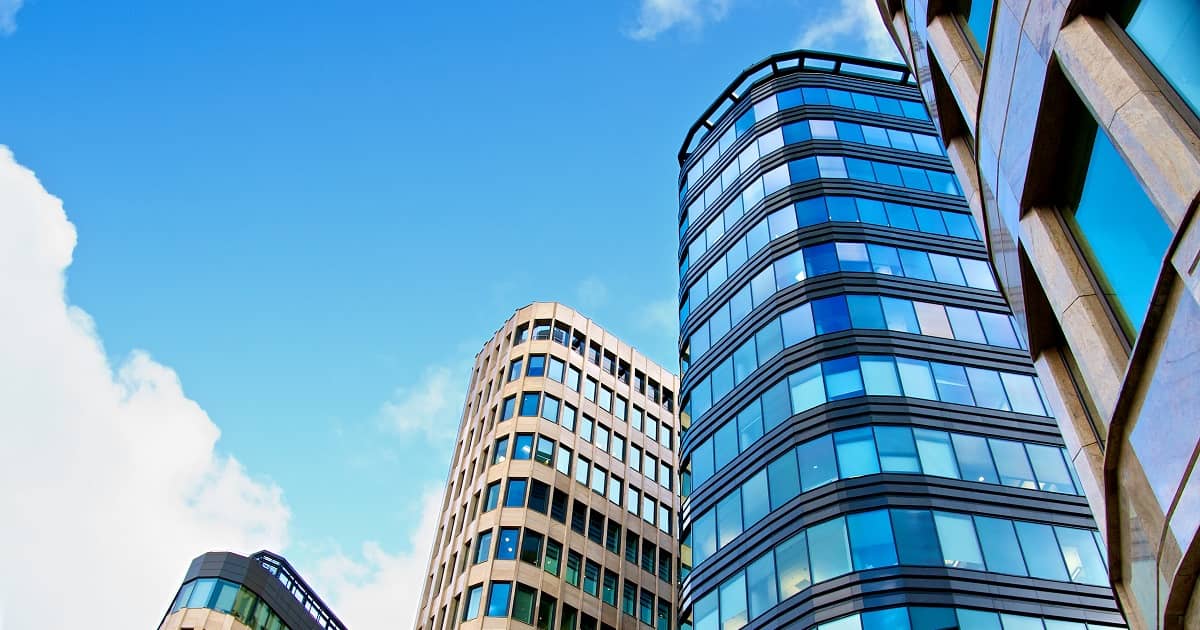
Real Estate Investment, Asset Management
Article | May 25, 2023
You have a commercial property and you need to lease it as soon as possible. In an ideal world, you would find a client as soon as your property is vacant. But we do not live in an ideal world. As a property owner or manager, you need to list your property, get the right contacts, and find a buyer who is ready to occupy immediately at a price that's efficient to you.
It can be a tedious journey. That’s where a broker comes in. Filling your vacant properties is essential but navigating a labyrinth of procedures shouldn't keep you occupied, which is whyleveraging a brokernetwork is so important. Here are three ways you can connect with brokers to make the most of their services.
Updating Your Inventory List
If you've tried handing a PDF of your current available listings, you might want to reconsider your approach for better chances of success. Brokers must be aware of the properties you have available if you want them to consider yours. The issue with online CRE listings is that many of them are outdated. This may cause a broker to think they’ve found an ideal property for their client, only to discover it’s already leased out. This doesn’t make a good impression. In addition, static listings are not search-friendly. To cut to the chase, deploy a search-ready, updated portfolio. Simplifying things for brokers will keep them coming back and contribute towards building a positive association with them.
Sharing an Inventory List Right to Their Inbox
Simplifying property search isn’t all. What are you doing to make a broker’s life much easier? You don’t need to spend a ton on proptech to reach out to brokers on time. Set up a commercial real estate email list that directly emails your updated listings to the brokers, providing them with timely alerts on when a new property is on the market or reminding them that an existing listing is still available.
Providing Easy Access to the Property Information
Regular emails about your updated property portfolio is bound to keep brokers engaged and informed. Going a step further, you can create a mobile-friendly property information page for each of your CRE properties to ensure that brokers have all the information they need at their fingertips. This avoids any bottlenecks caused by having the wrong information or no information at all about the specifications of your properties.
A Final Word of Advice
One of the most effective things commercial property owners can do to guarantee their properties are continuously leased is to engage with brokers, keep them updated, and simplify ways for them to interact with your property.
Read More

Real Estate Technology
Article | July 12, 2022
The spring selling season might be pushed back for a couple of weeks or even months as lockdowns restrict activity in some states and territories, according to CoreLogic. Prior to the COVID-19 pandemic, sales and listing turnouts typically rise from September to November. Over the ten years to December 2019, the growth in new listings during spring averaged 15.7% while sales hit 6.8%.
CoreLogic head of research Eliza Owen said both sales and listings tend to be most seasonal in the capital cities, particularly in Sydney and the ACT. With the lockdowns, however, the in-demand locations might not witness the same level of activity this upcoming spring, which is only two weeks away. "Observing housing market performance through lockdowns reveals that both sales and listings volumes will fall through lockdowns," Ms Owen said.
What can be learned from last year's Melbourne lockdown?
The extended lockdown in Melbourne last year could provide a glimpse as to what could happen in this year's lockdowns. Melbourne was in lockdown from mid-July to late October. During the period, listings dropped consistently, hitting the lowest at 1,411 in the four weeks to September, which was 80.7% lower than the previous five-year average.
There are several factors that contributed to the slowdown during the period.
Aside from the obvious restrictions that have limited inspections and auctions to virtual sessions, the low levels of consumer confidence also dampened the overall market sentiment, with vendors being unsure whether they would get an optimal price for their properties. Mortgage repayment deferrals and other government support also contributed, as these prevented distressed sales. However, when restrictions in Melbourne got lifted by late October, there was a sudden shift in the market mood, with listings quickly recovering. "New listings volumes through December 2020 trended an average 40.4% higher than the previous five-year average, suggesting the spring selling season of 2020 was 'pushed back' into the final months of the year," Ms Owen said.
Lockdowns to only postpone market activity
Ms Owen said the trend in sales and listings through a lockdown indicate the relative stability of the economy and the housing market amid the COVID-19 pandemic. "This has meant that housing purchasing decisions were more likely to have just been postponed through lockdowns, rather than abandoned all together.” In fact, the muted sales activity through lockdowns actually led to an uplift in sales across Melbourne in December of 2020 and July 2021, a time when seasonally, sales volumes would usually be far more subdued.
"There are tailwinds in place for housing market demand to suggest this may happen again; household savings rates remain elevated, new average mortgage rates continue to reach new record lows, and many government fiscal stimulus and broader institutional responses have been resurrected amid renewed lockdowns," Ms Owen said.
Affordability might become a concern
The consistent surge in prices across capital cities in recent months have already resulted in the inevitable constraints in affordability. CoreLogic's Hedonic Home Value Index in July showed a 1.6% gain in dwelling values, a retreat from the previous growth of 1.9%. Ms Owen said some support schemes that supported consumer sentiment, such as JobKeeper and HomeBuilder have already ended which could dampen the expected rebound in demand.
The rising threat of the Delta variant of COVID-19 might also be a major headwind, as it could result in further lockdowns which will ultimately impact the incomes of Australian households. "With affordability constraints becoming a larger obstacle in the market, as well as the potential for tighter credit conditions further down the track, if buyer activity does not match the lift in listings we could see a gradual rebalancing between sellers and buyers," Ms Owen said.
Read More

Real Estate Technology, Asset Management
Article | May 10, 2023
The belief that green properties bring multiple benefits for both residents and developers is becoming universal. The real estate buyers are realizing the integral role played by the green buildings in minimizing carbon emissions and contributing toward one of the biggest global agendas – Climate Change. Across the UAE, some landlords are evaluating the cost and the benefits of making their portfolios greener to meet the expectations of the property buyers as well as the tenants who are becoming more environment-friendly.
Rising international focus on climate change, Conference of the Parties (COP26) summit and UAE’s net-zero initiative to minimize emissions and pledging to invest almost $165 billion in clean energy by 2050 are the other major reasons for the landlords to construct green buildings.
Covid-19 has created an urge for employee safety to ensure they feel comfortable coming to the office. To take employee safety to the next level, corporations are choosing green properties to prioritize employees’ well-being and adapt to their occupational strategies and achieve their sustainability goals.
What is a Green Building?
The World Green Building Council (WGBC) defines a green building as – “a building that, in its design, construction or operation, reduces or eliminates negative impacts, and can create positive impacts, on our climate and natural environment.”
Some of the features suggested by WGBC which make a building green include –
Efficient use of energy, water, and other resources
Use of renewable energy, such as – solar energy, pollution, and waste reduction measures, and the enabling of re-use and recycling
Good indoor environmental air quality
Use of materials that are non-toxic, ethical, and sustainable
Consideration of the environment in the design
Construction, and operation
Consideration of the quality of life of occupants in design
Construction, and operation
Design that enables adaptation to a changing environment
Exponential Rise in the Demand for Greener Properties
There has been a huge rise in the demand for greener and energy-efficient properties not only in the UAE but across the Middle East. As per the Knight Frank – 2021 survey – proximity to green space and good air quality topped the list of location features and are more important to home buyers in the Middle East than their global counterparts. Half of the respondents cited the energy efficiency of their next home as being a ‘very important‘ issue, compared to 42% of global buyers.
There has been a rising demand for green and energy-efficient properties in the UAE. The region is at the pinnacle in the Middle East in the national concentration of sustainable buildings and stands at the 14th spot in the world with 869 green-rated buildings, according to the 2nd edition of Knight Frank’s (Y)our Space report – 2021 which surveyed almost 400 businesses worldwide on their workplace strategies and real estate needs.
This sends a strong signal to the developers and planners to embrace building green properties to attract eco-friendly homebuyers in the UAE.
Reasons for Rising Demand for Green Properties
Here are the top 7 reasons for the rising demand for Green Properties in the UAE
1. Increasing Awareness
The last decade has witnessed a colossal rise in the awareness among the UAE real estate developers and homebuyers about sustainable construction practices and the adverse effects of climate change, rising energy consumption, and carbon emission on their health and life which has significantly increased the demand for greener properties.
The rising awareness about the advantages of green buildings is very evident from the leading studies conducted recently. The research conducted by EcoMENA in 2021 titled – ‘Green Building Trends in the Middle East’ reveals that in the last decade, green building design has become a top priority of real estate developers across the Middle East. The number of LEED-registered buildings has increased rapidly across the region, from 623 in 2010 to more than 2500 in 2020. UAE is ranked among the top 10 countries that hold LEED certifications in the world with Dubai ranked 3rd in the list of cities having the highest number of LEED-certified buildings. UAE has more than 600 LEED-certified projects.
2. Supportive Government Policies
UAE has launched the ‘Net-Zero by 2050 Strategic Initiative’ to reduce carbon emissions and will invest over AED 600 billion in renewable energy to minimize carbon emissions and move the nation towards cleaner energy.
Other initiatives launched by the UAE to reduce carbon emissions which will increase the sales of green properties include – UAE Vision 2021, the UAE Centennial 2071, and the UAE Energy Strategy 2050, which sets a 50% target for clean energy in the country, among others. The UAE government has already established several sustainable development goals which serve as a guiding principle for most upcoming real estate projects in the region.
3. Lower Construction & Operational Cost
Research conducted by the World Business Council for Sustainable Development (WBCSD) reveals that the cost of installing green building features and technologies is significantly overestimated. Many developers perceive that the upfront cost of a green building is, on average, 17% higher than the original cost of a similar traditional building, however, that’s not true.
The research by the U.S. Green building Council (USGBC) reveals the initial cost of a green building is only 2%-3% higher than its non-green counterpart. Moreover, green buildings consume 25%-35% less energy than non-green buildings and have 14% less operation and maintenance costs than their traditional counterparts.
Modern property owners also prioritize renting or leasing green buildings or apartments due to their cost benefits. Green buildings also allow developers to save 20% of the initial construction cost annually by reducing energy consumption. Furthermore, green buildings allow developers to complete large-scale green projects at a much larger scale resulting in more revenues and business expansion.
Using incentive technology such as Virtual Power Plants (VPP) combined with an onsite solar asset will further allow real estate developers to reduce the operational cost and utility cost and explore new models of maximizing income outside of increasing rent and making their properties more attractive for eco-friendly homes buyers.
4. Lower Rents & Service Charges
Green properties are a win-win situation for every stakeholder. Due to their lower construction cost and energy consumption, green buildings have minimal operational costs. This is indeed good news for the homeowners and tenants as lower operational cost of the building leads to a reduction in their energy bills, service charges, and rents.
The lower service charges and rents often result in higher resident satisfaction and occupancy rate for the landlords and developers.
5. The rise in Environment-friendly Buyers
Rising awareness about the adverse impact of emissions on the health of humans as well as on the environment has attracted a number of homebuyers toward green properties. This is encouraging real estate developers to construct more green properties to foster quick sales.
Two years ago we had to convince property developers to go green and think about efficient energy. The majority didn’t know what ‘green’ meant and assumed there was an extra cost attached. Now developers want to go green and some are achieving Leadership of Energy and Environmental Design (LEED) certification, an internationally recognized green building rating system. Many large developers are creating their own green design guidelines to be followed by smaller developers building on their plot of land.”
Khalid Bushnaq, CEO of Energy Management Services (EMS)
There has been an exponential surge in buyers prioritizing green properties as they support a cleaner environment for future generations.
6. Investors Prioritizing Greener Properties for Letting & Sales
There has been a rise in the investors and businesses prioritizing the green credentials of a property while making their purchase decision. This will indeed spur their saleability and rentability in the coming days. To cater to the demand of modern and environment-friendly buyers, real estate developers are coming up with greener properties and are evaluating the cost and the benefits of greenifying their portfolios.
7. Rising Sustainability Concerns
There have been rising concerns about sustainability among both residential & commercial clients. Corporates across the globe are showing great interest in going sustainable and prioritizing sustainable buildings for their offices.
According to the 2nd edition of Knight Frank’s (Y)our Space report, “40% of firms have set a net-zero carbon target and, of those, 77% are aiming to achieve this by 2030. 87% of firms surveyed had less than half of their current global real estate portfolios either ‘green’ or ‘sustainable’.
Rising sustainability concerns among the buyers will accelerate the sales and rents of the green properties and will play a crucial role in minimizing the emission rate of the UAE.
Summary
Here is the summary of the article –
There has been a rise in the attractiveness of greener properties among buyers across the UAE to reduce carbon emissions and move towards a healthy lifestyle.
Climate change, COP 26, and UAEs investment in clean energy by 2050 have been the major drivers in raising awareness of green properties
Along with the residential, the commercial sector is also prioritizing moving their offices to green properties to prioritize employee’s safety and adapt to their occupational strategies
A Green building is a building that, in its design, construction or operation, reduces or eliminates negative impacts, and can create positive impacts, on our climate and natural environment.
The Knight Frank – 2021 survey on Middle East buyers reveals that proximity to green space and good air quality topped the list of location features. Half of the respondents considered the energy efficiency of their next home to be a ‘very important’ issue, compared to 42% of global buyers.
UAE is ranked 14th in the world with 869 green-rated buildings
The top reasons for the rising demand for green properties are as follows
Increasing awareness
Supportive government policies
Lower construction & operational cost
Lower rents & service charges
Increase in environment-friendly buyers
Investors Prioritizing Greener Properties for Letting & Sales
Rising sustainability concerns among the buyers
Read More

Real Estate Technology
Article | December 9, 2021
The construction industry, whether operating at the building level, infrastructure level, or city level, has undergone significant changes over the past decade, and the pace of change has only intensified in the past year. Opaque operating models are giving way to digitalization and transparency in every aspect of the industry, leading to better accountability of the business stakeholder ecosystem and better experience and quality of life for the end customers.
The value realization for the sector is coming in three different ways, each with its set of technologies, tools, systems, and processes that lead to specific value maximization.
1. Connected Stakeholder Ecosystems
Every stakeholder and their interactions and service provision to building and construction has been digitalized and automated.
Architects, urban planners, designers have long been using tools and technologies. The use of 3D modeling and visualization, AR/VR platforms, and drone mapping are creating intuitive means to fast-track the design iteration process and reduce errors. Innovation has been happening in building materials and technologies for smart logistics and inventory management, which is digitalizing the procure to pay cycles and reducing the cost and sustainability footprint of the industry. Infratech is being included into civil construction, and information, communication, and operational tech hardware and software solutions are being integrated at the design stage itself.
The industry uses the services of a network of internal and external third party providers and managers. The combination of mobile and enterprise applications, connectivity, and internet of things devices and variables is connecting these people together. Unified frameworks and digital and AI/ML tools allow seamless construction, management, and optimization of built spaces. The sales process is becoming highly digital with the use of customer relationship management platforms, channel management applications, and digital sales aids that blend AR/VR, 3D visualization, audio, video, and digital.
The governance and financial mechanisms have evolved as well. Government bodies have digitalized and permissions, access rights, and payment mechanisms are increasingly digital. Regulators are moving towards real time sensor based monitoring and centralized digital reporting on effluents and emissions, aiming to improve sustainability metrics. An array of digital and cloud financial management tools, systems, and dashboards allow every aspect of the financial flow to and from entities to be managed, monitored, and optimized.
The users, in both the customer and citizen persona, have become digitally savvy and experiential. The connected and sentient building, infrastructure, and city ecosystem increasingly allows for connected living where many services can already be accessed digitally.
2. Connected Lifecycle Management
The construction industry is using digital and automation technologies at every stage of projects – from design to monetization of building, infrastructure, or city systems. Ingredient technologies such as internet of things, artificial intelligence, block chain, distributed computing, edge and mesh intelligence, cloud computing, big data analytics, and data visualization are allowing the industry to plan better and act predictively.
The Design phase, in addition to using design and planning tools and technologies, is increasingly adopting concepts of wellness, biophilia, and blue-green integrations to blend technology and architecture.
The Build phase has significantly transformed through innovative construction materials and methods, as well as digital, cloud, and sensor based solutions to monitor staff, progress, audits, and errors in construction. The entire land records management system in the country has been digitalized, and plans are underway to use drone based mapping to catalogue all assets and sites at a national level.
The Sell phase is using technologies and platforms that have disintermediated some ecosystem partners and aggregated others, increasing the flow of information, communication, validations, and transactions. From marketing to site visits to legal documentation and commercial transactions, every step has been digitally transformed through a combination of AR/VR, AI/ML, digital, and cloud technologies.
The Operate phase is seeing newer models of maintenance and management of assets over the long term. Tech enabled metering and monitoring allows for discretization of pay per use type of commercial arrangements, which can be digitally contracted and managed. This allows multi-stakeholder and multi-user assets to operate seamlessly. Multiple automation and real time monitoring systems and solutions – whether fully integrated or point solutions, are enhancing visibility and improving efficiency of operational performance.
The Experience phase ensures an interplay of operational and service related systems and technologies allow the users to better access services at building, infrastructure, or city level. There is a lot of emphasis on enhancing customer experience by reducing wait times, improving service levels, creating areas and systems for interaction and engagement, and delivering a better quality of work or life to the end user.
The Monetization phase is increasingly at the top of mind of administrators, owners, and operators of construction assets. Long return on investment cycles and complex modes of deployment of public and private capital predicate focus on easing the flow of money and identifying multiple modes of monetization to ensure that projects can succeed. Value added services through retail, advertising, data, or service based use cases are allowing for recurring revenues to be generated. Many of these services can be digitally conceptualized, delivered, and managed.
3. Connected Systems and Services
Buildings and infrastructure spaces are increasingly envisioning themselves as an interconnected system of functions, utilities and services, all managed centrally and digitally through a building level control room or an infrastructure or city level integrated control and command center.
The set of technologies first adopted for smart cities - such as networking and connectivity; smart management of water, waste, lighting, power, sewage, air quality and emissions; smart access to services and retail; interconnected mobility, parking, and traffic management; and managing request-response systems and on-demand servicing and issues management - are increasingly becoming important for buildings and infrastructure projects. Transport hubs are reimagining themselves as microcities. Road assets are creating logistics hubs and multiple digital monetization channels. Buildings are transforming into mixed use spaces that are accessed and managed digitally. On-demand, surge, discounted pricing mechanisms rely on complex algorithms and predictive forecasts.
Multiple indices and standard comparative metrics are being considered by users, governments, regulators, and financiers of patient long-term capital. At the building level, Green ratings and Well Building standards are being measured and reported, and creating methods of differentiating premium and non-premium buildings. Global Infrastructure rankings rate countries in the quality and density and access of road, transport, utilities, and other major infrastructure systems and projects. Ease of Living Index and Sustainable Development Goals create the benchmarks to measure and monitor the performance and impact of city systems. Increasingly, gamification through Swachh Survekshan, Municipal Performance Index, and other city, state, and national level assessments is creating awareness and improving service levels. The indices themselves rely on a set on technology inclusion within projects and technology systems to aid performance measurement.
Read More